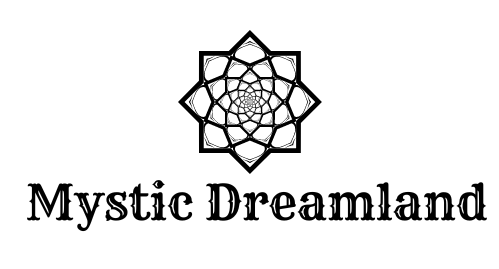Navigating the world of mortgages can seem overwhelming, but finding the right lender can make a big difference. Whether you’re buying your first home or refinancing, it’s important to know which lenders offer the best mortgage rates and terms.
With so many choices out there, finding trustworthy lenders that match your financial goals can save you a lot of money over time. This guide reveals the best mortgage lenders in the USA, giving you details about what they offer and how satisfied their customers are.
Learn how these lenders can make getting a home loan easier and help you get the best deal for your needs.
What Is a Mortgage?
Most people can’t just buy a house outright, so they take out a mortgage, which is a loan for buying a home. After putting down some money upfront, usually between 3% to 25% of the home’s price, they get a mortgage to cover the rest.
A mortgage lets you pay off the loan over a set time, often 30 years. Each payment you make includes part of the loan amount (called the principal), interest (the cost of borrowing the money), property taxes, and sometimes mortgage insurance. Homeowners insurance might be included in the payment or paid separately by the homeowner.
How Are Mortgages Processed?
A mortgage is a loan you get to buy a home. You pay back this loan with interest every month over several years, like 15, 20, or 30 years. If you can’t pay back the mortgage, the lender might take your home through a process called foreclosure.
Banks, credit unions, and other lenders offer mortgages. To apply, you fill out a form and give them information about your money situation. They look at your income, debts, and credit score to decide if you qualify for a loan and what terms they can offer you.
Why and How to Compare Mortgage Rates
Mortgage rates you see on this page are just average rates from different lenders, provided by Zillow. These give you a rough idea of current mortgage rates, but they might not be exactly what you’ll get.
When you visit a lender’s website and see mortgage rates, those are also average rates. Lenders use certain assumptions about a “sample” borrower, like their credit score, location, and down payment amount, to generate these rates. Sometimes, they include discount points, which are extra fees you can pay to lower the interest rate. This makes their rates look lower.
To find rates that are more tailored to you, you’ll need to share some details about yourself and the home you want to buy. For example, you can enter your ZIP code at the top of this page to start comparing rates. On the next page, you can adjust details like your credit score, the amount you plan to spend, your down payment, and the loan term to see rates that better match your situation.
Whether you’re looking at sample rates on lenders’ websites or personalized rates here, you’ll notice that interest rates vary. This is why it’s important to shop around for a mortgage lender. Even small differences in rates can save you a lot of money over the life of your loan by reducing your monthly payments and the total interest you’ll pay.
It’s a good idea to get mortgage preapproval from at least three lenders. With preapproval, lenders check some of your financial details, so the rates and amounts they offer are more accurate. Each lender will give you a Loan Estimate, a standardized form that makes it easy to compare interest rates and fees.
When comparing rates, you’ll usually see two numbers: the interest rate and the APR (annual percentage rate). The APR is typically higher because it includes both the interest rate and other costs associated with the loan, like lender fees. Because of this, the APR is considered a better measure of the loan’s true cost.
Types of Mortgages
A mortgage is a type of loan where the collateral is the actual property being purchased, usually a home. There are several varieties of mortgages, and each has advantages, terms, and conditions of its own. Potential homeowners can select the best alternative for their financial circumstances and long-term goals by being aware of these many sorts. Fixed-rate mortgages, adjustable-rate mortgages (ARMs), interest-only mortgages, and government-backed mortgages are the four primary categories of mortgages.
Interest-Only Mortgages:
- Description: Borrowers pay only the interest for a certain period, usually 5-10 years, after which they start paying both principal and interest.
- Advantages: Lower initial monthly payments. Increased cash flow in the short term.
- Disadvantages: Higher payments once the interest-only period ends. Risk of not building home equity during the interest-only period.
Fixed-Rate Mortgages (FRMs):
- Description: The interest rate remains constant throughout the life of the loan.
- Term Lengths: Commonly 15, 20, or 30 years.
- Advantages: Predictable monthly payments make budgeting easier. Protection against interest rate increases.
- Disadvantages: Higher initial interest rates compared to ARMs. Less flexibility if market rates fall.
Adjustable-Rate Mortgages (ARMs):
- Description: The interest rate adjusts periodically based on a specified index.
- Adjustment Periods: Common terms include 5/1, 7/1, and 10/1 ARMs, where the first number indicates the fixed-rate period in years, and the second number indicates how often the rate adjusts afterward.
- Advantages: Lower initial interest rates compared to fixed-rate mortgages. Potential savings if interest rates decline.
- Disadvantages: Uncertainty and potential for higher payments if interest rates rise. More complex terms and conditions.
Jumbo Mortgages:
- Description: Loans that exceed the conforming loan limits set by Fannie Mae and Freddie Mac.
- Advantages: Allows for financing higher-priced homes.
- Disadvantages: Stricter credit requirements. Higher interest rates and larger down payments are typically needed.
Government-Backed Mortgages:
- Types: FHA loans, VA loans, USDA loans.
- FHA Loans: Insured by the Federal Housing Administration, designed for low-to-moderate-income borrowers with lower credit scores.
- VA Loans: Guaranteed by the Department of Veterans Affairs, available to veterans, active-duty service members, and some members of the National Guard and Reserves. Typically require no down payment.
- USDA Loans: Offered by the U.S. Department of Agriculture for rural property buyers, often with no down payment required.
- Advantages: Lower down payments and more lenient credit requirements. Special benefits for specific groups (e.g., veterans).
- Disadvantages: Potential for additional fees and insurance costs. Property location and condition restrictions for USDA loans.
Picking the right kind of home loan depends on several things, like how much money you have, the amount you can pay upfront, your plans, and how comfortable you are with changes in interest rates. It’s really important to look into each option and understand them well so you can make a smart choice.

